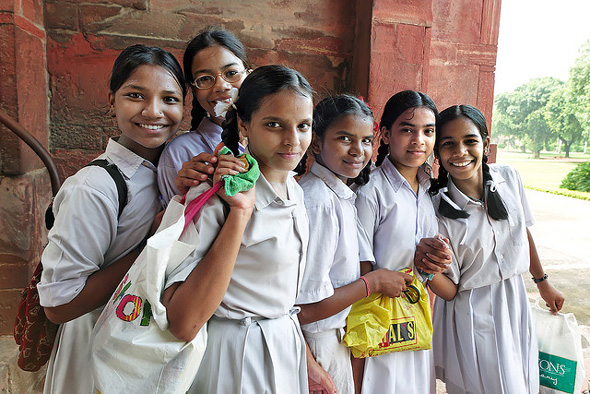-
Hillary Rosner, Momentum Magazine
Bridges and Bicycles in India
October 8, 2012 By Wilson Center Staff
This is part of a seven-part “environmental challenges and opportunities” series featured in the University of Minnesota’s fall issue of Momentum magazine.
As world population careens toward nine billion, all the planet’s systems will be strained. Lowering fertility rates is a complex endeavor, and no one path leads directly there. Poverty, access to contraception, education, job prospects, cultural mores – all of these influence family size. So addressing any of them, or a combination, can help. Solutions abound, at least on a relatively small scale, such as conservation programs that include family planning components.
But the most promising opportunities may lie in promoting girls’ education. Study after study throughout the years has found the same thing: Across every culture, women with higher levels of education have, on average, fewer children. (Girls’ education is also correlated with higher individual and national income levels.) One recent analysis by the International Institute for Population Sciences in Mumbai, India, found that the relationship between education and fertility is mutual. Increased education is followed by decreased fertility – but women who have fewer children are also more likely to receive more education.
India is home to several innovative efforts. In Uttar Pradesh and Orissa, two states with massive gaps in gender inequality, CARE India runs “bridge” schools, residential programs that give girls who have had little or no schooling a chance to catch up. In one district where the literacy rate for girls was near zero, the nongovernmental organization started its first Udaan (which means “flight”) 12 years ago. The school took in 100 students for 11 months in a round-the-clock program that not only taught them basic elementary school coursework but also focused on life skills – everything from leadership to cycling.
Gradually but steadily, the age at which the girls married increased, says Suman Sachdeva, technical director for education at CARE India, “so you now rarely see these girls get married before 18.”
CARE currently operates four Udaan schools in India, and the concept is spreading to other NGOs and even the government. A recent “right to education” law makes education a fundamental right for children age 6 to 14, who are now entitled to free schooling.
But what happens to those kids – many of them female – who are suddenly eligible for school but are now years behind? Sachdeva hopes the bridge school idea will help solve the problem and ensure that more girls can pursue an education.
Elsewhere in India, in 2007 the chief minister of Bihar state began giving schoolgirls vouchers to buy bicycles. Preliminary research shows the program has significantly increased the number of girls staying in school.
Read the full series and entire issue for free on the Momentum website.
Sources: CARE India, International Institute for Population Sciences.
 A Publication of the Stimson Center.
A Publication of the Stimson Center.



